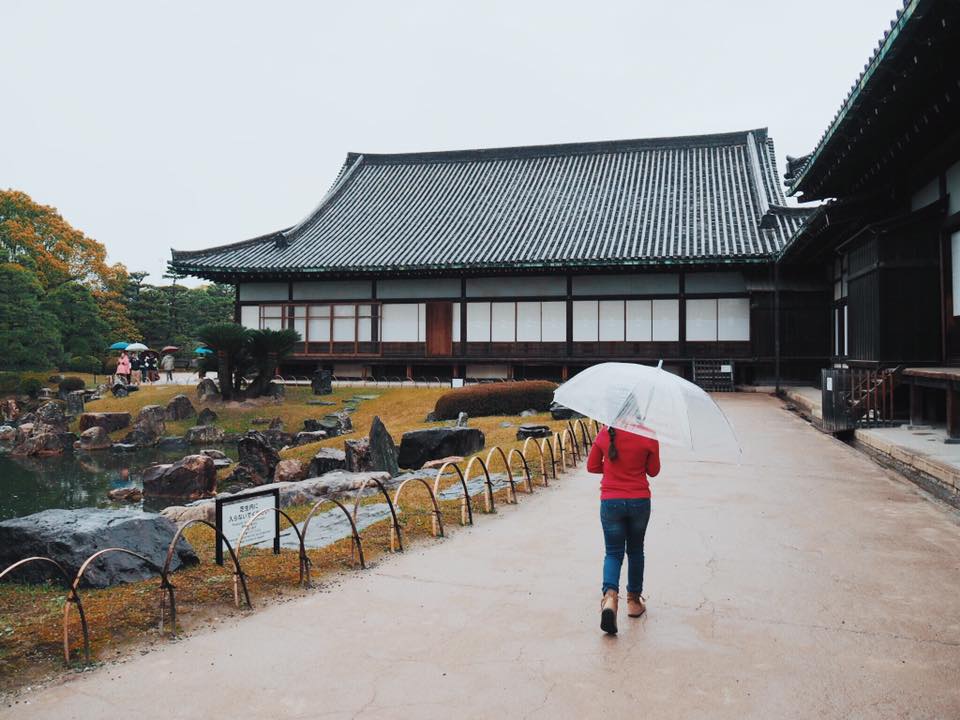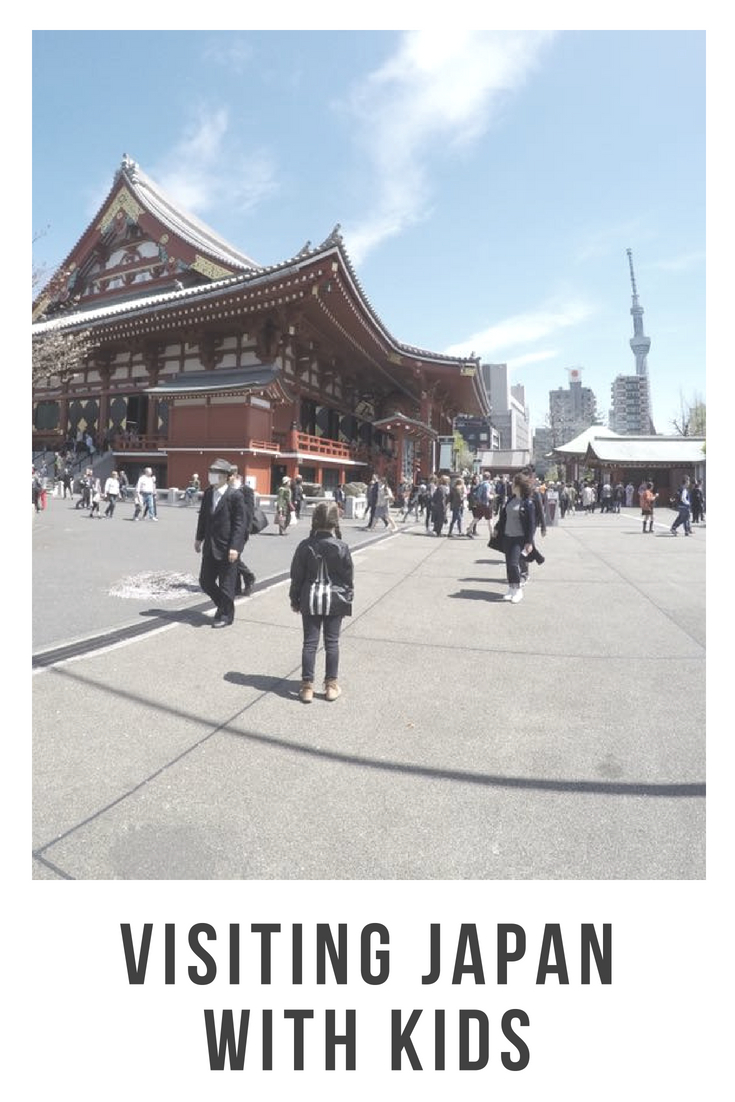Japan had been seeping into my subconscious since I first started watching Anime as a little girl. Without even realising it, I was amassing a love for this amazing country from afar. As an adult I gravitated to cars made in Japan, enjoyed the cuisine whenever I could, and even found myself watching and playing Japanese games. When my kids arrived and I found that they were naturally drawn to all things Japanese I decided that we needed to visit. Visiting Japan with kids became a bucket list goal that we worked hard to achieve.
Before heading to Japan I had all these expectations that it would be quirky yet cultural. It was everything I thought it would be but so very much more. It blew every concept I had right out of the ballpark and impressed me again and again. It convinced me that I should be encouraging everyone to visit themselves so they could taste what it is like.
Visiting Japan with Kids : Planning Your Trip
Table of Contents
With a little preparation, visiting Japan with kids will be a wonderful adventure for your whole family. We hope our tips help you have a smooth exploration of one of our favourite countries.
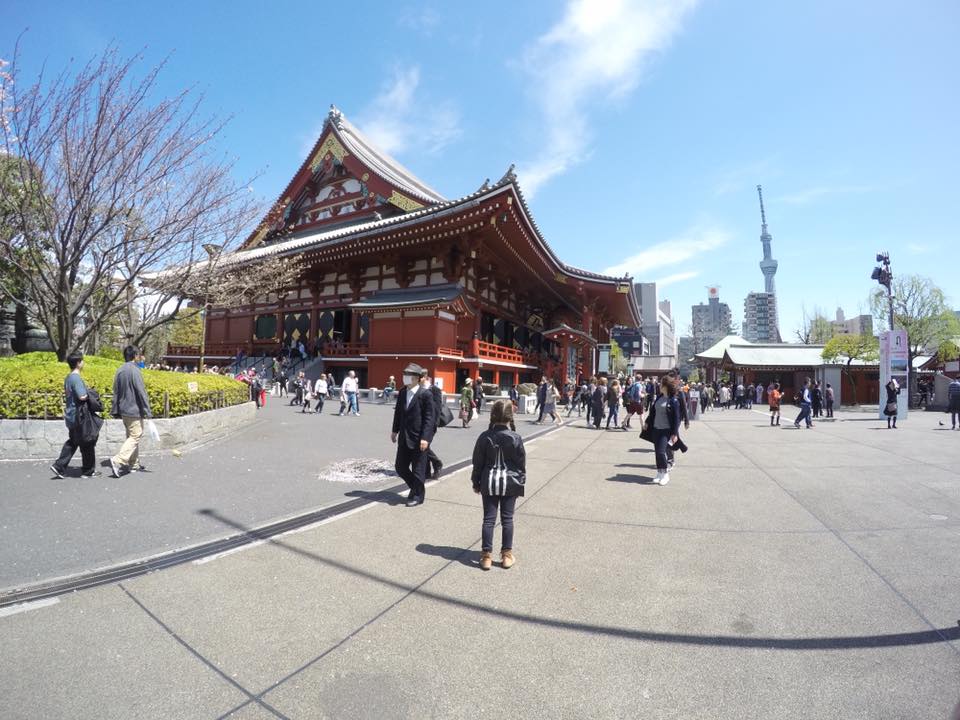
What to Pack
The biggest tip I can give you when visiting Japan with kids is to pack as lightly as you can. A good trip to Japan is likely to include lots of walking, the use of public transport and movement between places. Packing lightly will make transit manageable, especially with kids.
If you hope to explore a town or two between your point to point travel destinations, most train stations have lockers for luggage. For example, we plan to stop at Himeji to explore Himeji Castle on our way to Hiroshima from Tokyo. We’ve asked our Japanese insiders who have promised us lots of places to store our luggage while we explore. Then there’s the option the Takuhaibin service which will pick up your luggage from the nearest service center or from your hotel, and deliver it to your next location. I’m told that hotel receptions will often organise it. We’re keen to try it on our next trip as we are certain it will make visiting Japan with kids a little easier.
Pram or Baby Carrier?
There’s no getting around the fact that most cities in Japan are bustling. Transport options are often crowded and when walking around the older parts of any town you will find that the paths are a little uneven. Up until our youngest was four, we travelled with an Ergobaby carrier on our travels, forgoing the pram which made things a little cumbersome. However, you may prefer a pram. I would look for options that are portable to make visiting Japan with kids a little simpler.

Getting Around
How do you get around Japan? Whilst Japan is a relatively small country, the cities are mega big and require some planning. Knowing your options will help you get from A to B easily.
JR Pass
Available only to non-residents, the JR Pass allows the pass owner unlimited travel on Japan Railways (JR) transportation, including all JR trains, Shinkansen bullet trains (except Nozomi and Mizuho service), limited express trains, express trains and rapid or local trains, JR bus company local lines (JR Hokkaido Bus, JR Bus Tohoku, JR Bus Kanto, JR Tokal Bus, West Japan JR Bus, Chugoku JR Bus, JR Kyushu Bus), JR Miyajima ferry and Tokyo Monorail. Personally, I think that visiting Japan with kids must include a trip on at least one shinkansen, don’t you?
It can be purchased for 7 days, 14 days or 21 days in either ordinary or green classes. Once purchased, you will be provided with a coupon which you redeem in Japan on your first day of travel.
Depending on your travel itinerary, the JR Pass can make travel between cities and even within cities super easy. We found it the cheapest option to travel between Tokyo, Kyoto and Osaka, but for others, it can be more expensive so do your research.
Pasmo / Suico Pass
For those of you who have travelled around Sydney and Melbourne, you will be quite familiar with the Pasmo / Suico pass concept. Basically, it is a prepaid smart card that allows you to use most public transport (metro, trains, buses, monorail) in Japan.
The card also functions as an electronic wallet. You can make small purchases on trains, in vending machines, convenience stores and restaurants displaying the following symbols.
It can also be used to pay for taxis and lockers at stations. Please note that the Suica card does not work on express trains, shinkansen, long-distance buses (highway buses) or airport shuttles.
Taxi
The taxis are easy to use in Japan BUT you may need to have your destination written down or on your phone for the taxi driver as they may not speak English. Be mindful also that the doors are automatic, so you don’t open or close them. We paid in cash although have learned that the Suica or Pasmo card can be used in some taxis.

Family Restaurants
Japan is home to many families so of course there are a number of family restaurants to eat. We were told that locals often head to ‘family restaurants’ chains (ファミレス; famiresu) like Royal Host and Saizeriya as they have kid meals, high chairs, and non-smoking sections.
Eating
There’s a general misconception that the Japanese live primarily on raw seafood and rice creating some anxiety for those visiting Japan with kids for the very first time. However, aside from the plentiful “American” fast food restaurants found in most of the bigger cities, there are plenty of options to choose from that should fill everyone’s bellies and leave you satisfied. We’ve tried to break these up into different categories to help you identify what to eat with your kids’ likes (and dislikes) in mind.
Noodles
There are three main noodle types in Japan: udon (うどん), ramen (ラーメン) and soba (そば). They can be served hot or cold and are flavoured depending on this dish type.
Ramen noodles are wheat-based and are a dark yellow in colour. They’re usually found in the soup which enhances their taste.
Udon noodles are made from wheat flour and are white in colour. They are much thicker than ramen noodles.
Soba noodles are made from buckwheat flour which gives in a distinctive brown colour. They are around the same thickness as ramen but are much softer and less elastic in texture. They are most excellent at soaking up broth. Yum!
Rice Dishes
Rice is a staple food across most of Asia. It appears predominantly in Japanese food across a number of different dishes. Understanding the differences will help you to identify which your kids are likely to eat.
Inari Zushi (いなり寿司) is sushi in its simplest form. This is one of Striker’s favourite snacks. Typically, it is a ball of sushi rice which has been stuffed into a pouch of sweet and savory fried tofu. It is quite sweet and juicy.
Onigiri (おにぎり) is found in every 7-eleven that we ventured into while exploring Japan. With there versatility of yummy fillings, Onigiri reminds me a little of Australian sandwiches as they are also triangular in shape and are a cheap eat.
Omuraisu (オムライス) is basically an omelette that encases a filling of rice and veggies. It’s simple but delicious and near enough an omelette that it’s not particularly strange for kids. Yum!
Hayashi Rice (ハヤシライス) usually contains onions, beef, and button mushrooms in a thick sauce, often with a tomato base. It’s a good choice for kids who don’t really like spiced foods.
Gyudon (牛丼) was one of our biggest addictions when we were exploring Japan. It consists of strips of thinly sliced beef and onions which are stewed in soy-sauce and then placed atop a bowl of rice. Simple but yummy and bursting with flavour.
Fried
I don’t know about your kids, but my kids are big fans of food that crunches when they bite into it. Despite possibly being the least healthy food on the Japanese menu, my kids love Japanese fried food and I am guaranteed that they’ll eat it all. As a sometimes food option, I don’t think it’s too bad on a travel adventure. There are two main varieties of fried Japanese food to familiarise yourself.
Tonkatsu (とんかつ) is often found in any busy shopping or underground area in the main cities of Japan. This cuisine is basically your Japanese version of a pork schnitzel. It is technically a breaded, deep-fried pork cutlet, but same same, although the presentation of the tonkatsu elevates it above the schnitzel perhaps?
Tempura (天ぷら) is a familiar favourite for most Australian kids. In Japan, it can be both a cheap eat and fine dining depending on where you go to eat. It’s all about the oil when it comes to good tempura. The lighter the oil the better.
Grill
When it came to eating in Japan, it was T that sought out the grill again and again. He just loved seeing the food sizzling in front of us as the chef cooked our meals. There are a variety of types and they are very easy to find.
Yakitori (焼き鳥) was an absolute favourite for our family. Sunshine was a picky eater on our last visit but she never refused one of these. They are, quite simply, vegetables or chicken grilled on skewers over an open flame. Just be mindful that sometimes the chicken can be a little pink, so request that it is cooked all the way through.
Takoyaki (たこ焼き) is a yummy delight that we found best in Osaka. Cooked as bite-size balls, the inside reveals a chunk of octopus.
Yakiniku (焼肉) is super fun. Our experience saw us entering restaurants where we were given the meat and vegetables raw which we then cooked on a grill built into the table. Great for families as kids will usually try the food that they themselves have cooked. Just be careful, the grill is hot and kids can reach out and burn themselves if you are not vigilant.
Okonomiyaki (お好み焼き) is cooked on a hot plate and is basically a large savoury pancake, but Japanese styled and flavoured. We eat these at home so the kids loved them before we even attempted them in Japan. There are numerous varieties of okonomiyaki, but most are topped with mayo, shaved bonito flakes, and sauce. Just like Yakiniku, many restaurants will provide the ingredients and you then cook it yourself.
Sushi and Sashimi
Sushi (寿司) and Sashimi (刺身) has grown in popularity across Australia so is not particularly unusual for my children who have it in their lunchboxes a few days at school each week. Just like Sushi and Sashimi in Australia, you will find it in cheap to expensive restaurants and take away places across Japan. I absolutely love the bento boxes at the train stations too!
Gyoza
Gyoza (餃子) is basically a Chinese dumpling (yes that’s where it originates!) which has a crispy bottom and yummy soft top. T likes to eat it with a chilli sauce where the rest of the family prefer the regular dipping sauce.
Desserts
Okay, this is confession time. We didn’t actually eat many Japanese desserts when exploring Japan as we were total gluttons and pigged out on our main meals, leaving no room for dessert. I promise to update this section on our next visit.
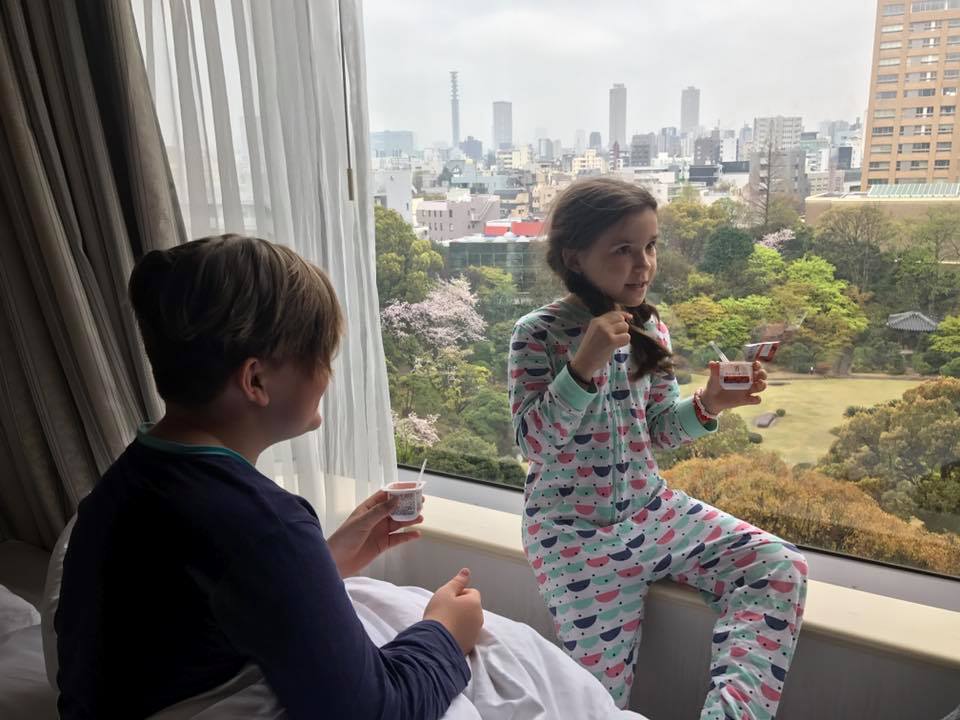
Where to Stay
Hotels
Hotels rooms in Japan are generally smaller than anywhere else in the world. This can make it a little difficult finding accommodation on a budget for families hoping to stay close to train stations and the action. We use booking.com to track and source accommodation that will fit our family needs. The suggestions below are where we stayed on our last visit. Please note that they were good choices within our budget on our trip BUT track the prices to see if they are suitable for yours.
Where we stayed:
Tokyo – RIHGA Royal Hotel. The suites are moderately priced and large enough for a family of four (everyone gets a bed!). You can read our review here.
Osaka – The Park Front Hotel at Universal Studios Japan. Whilst it is a little outside the centre of Osaka, it is right next to Universal Studios and the perfect location for a family travelling to Osaka for the theme park.
Kyoto – Kyoto Brighton Hotel. This hotel offers a shuttle bus to and from the station. The rooms were large and spacious and it is within walking distance of the Kyoto Imperial Palace.
Airbnb
Recently there was a government crackdown on the use of residential accommodation as Airbnb in Japan. As a consequence, all hosts must be issued with a permit to offer Airbnb services. This has seen many travellers left without accommodation when their Airbnb was cancelled. Until it is sorted, I am reluctant to suggest Airbnb in Japan.
Click to read more about the Airbnb issue in Japan.
Ryokan
Existing since the 8th century AD, the Ryokan is a traditional Japanese guesthouse. In this style of accommodation, you can experience the Japanese culture in all its glory. A traditional ryokan will feature sliding paper doors, “tatami” mat flooring, and futons along with other items.
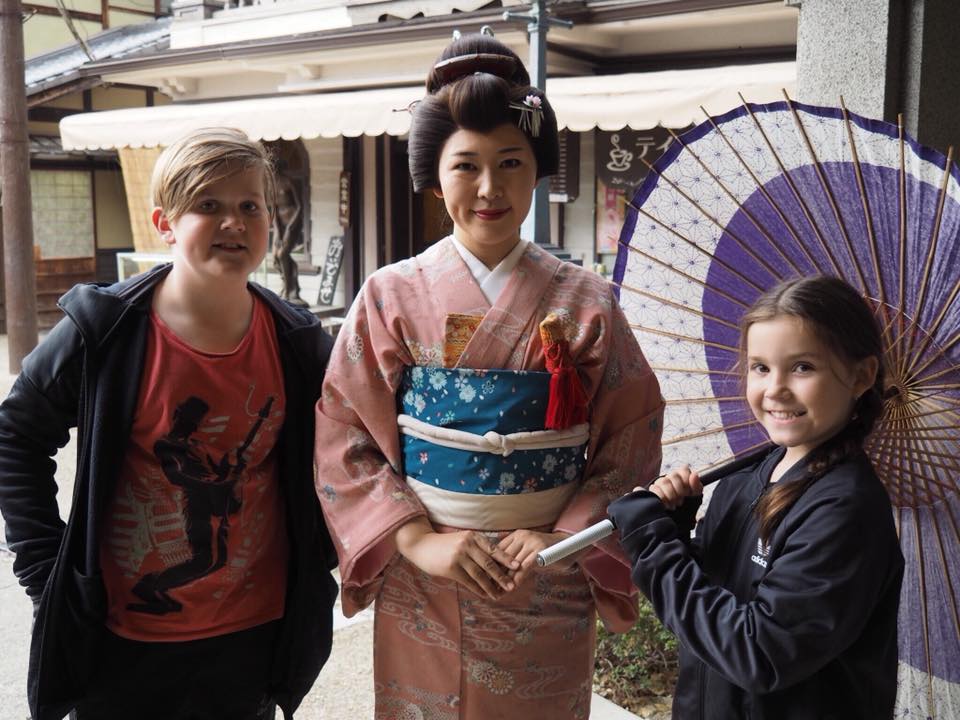
Paying for Things
Japan is a cash-based society which means you need to plan ahead when travelling with kids and have yen on you at all times, especially if you are travelling outside the major cities. 7-Eleven is also going to become your new best friend, with this little shop found all over Japan offering ATM machines that accept international keycards.
Major hotels, shopping centres and restaurants often take credit card, but it’s not consistent. Our Visa card was not approved at DisneySea but our Mastercard was (or was it the other way around?). Have an alternative or two up your sleeve.
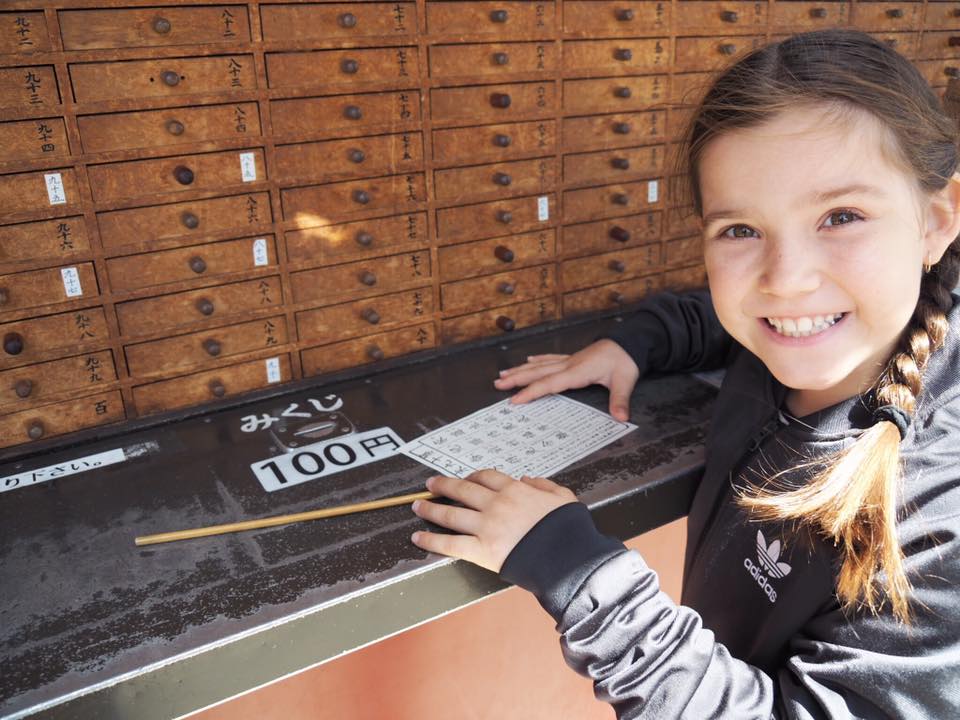
Japan is an incredible country to visit with kids with a plethora of incredible experiences awaiting you and your family.
Read about the best places to see cherry blossoms in Japan.
The things you need to know before you visit Tokyo.
Visiting Harry Potter in Japan

